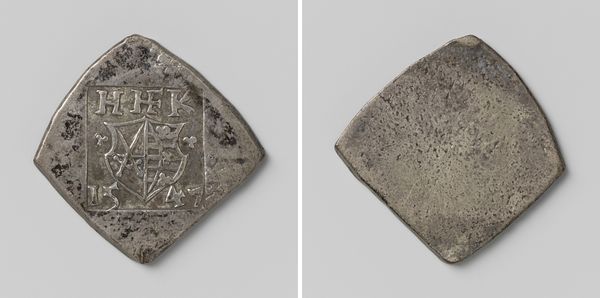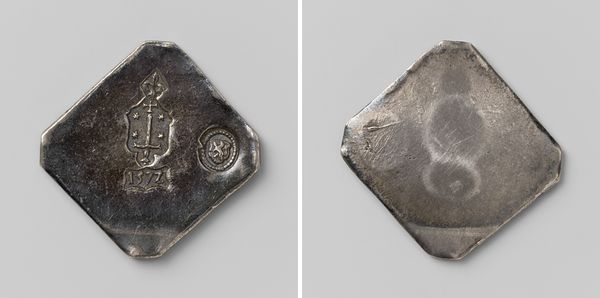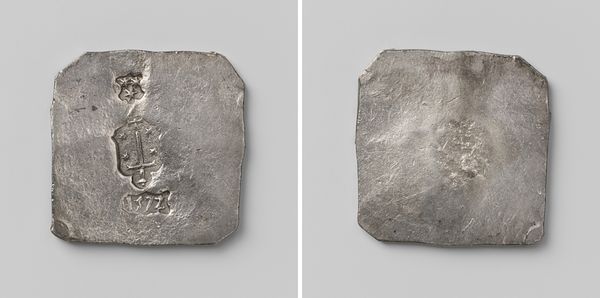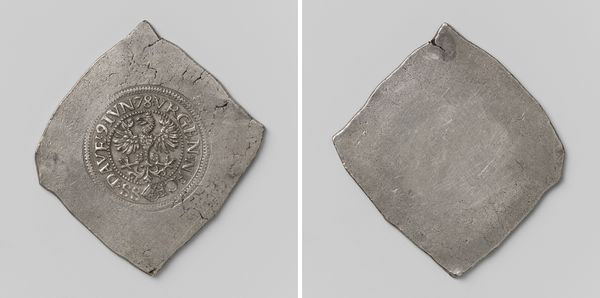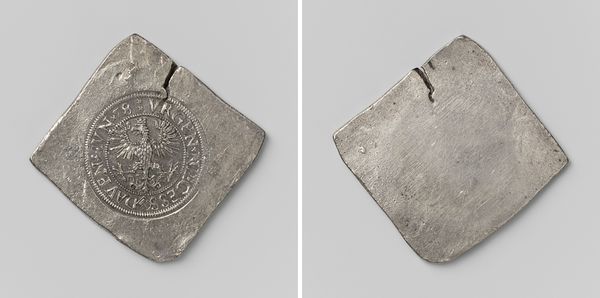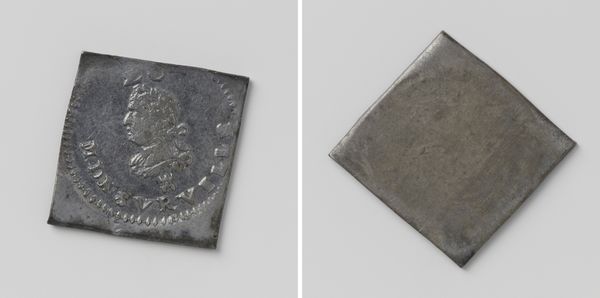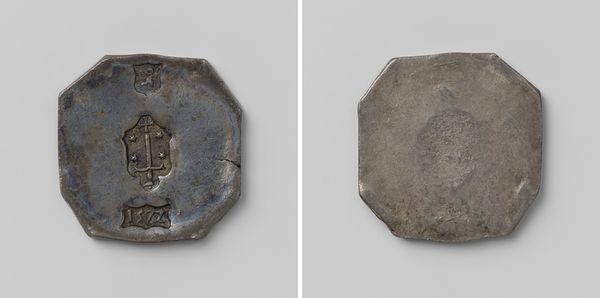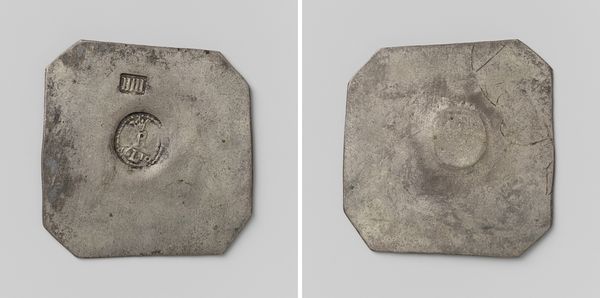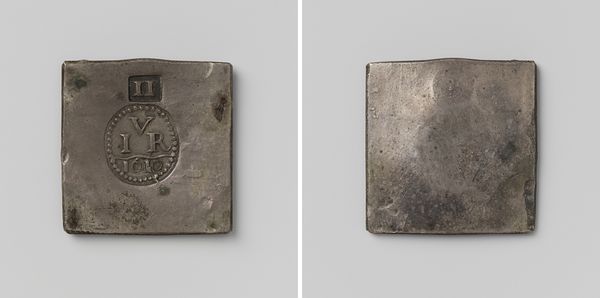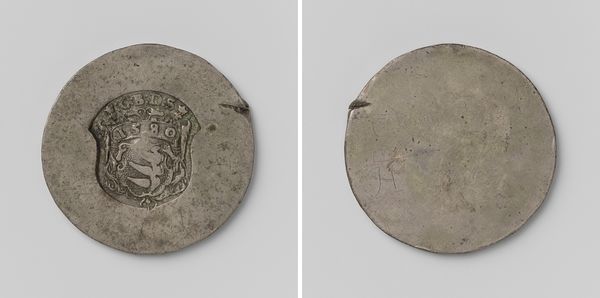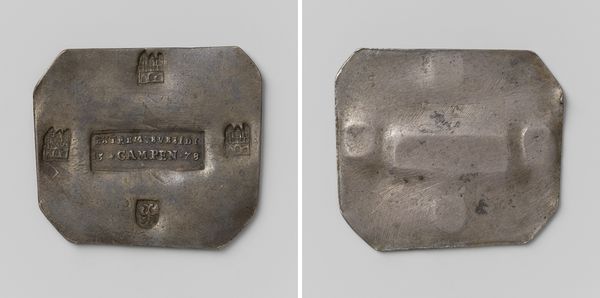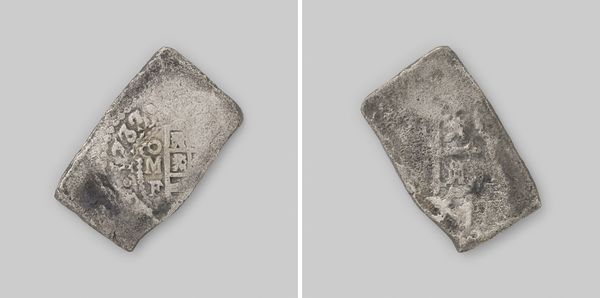
Taler, noodmunt voor het leger van markgraaf Albert van Brandenburg-Kulmbach, kort na het Verdrag van Passau geslagen, mogelijk tijdens de belegering van Schweinfurt. 1553
0:00
0:00
print, metal, relief, sculpture
# print
#
metal
#
sculpture
#
relief
#
geometric
#
ancient-mediterranean
#
sculpture
Dimensions: height 5 cm, width 5.1 cm, weight 28.88 gr
Copyright: Rijks Museum: Open Domain
Editor: This is quite an unusual piece! It’s a 'Taler, noodmunt voor het leger van markgraaf Albert van Brandenburg-Kulmbach, kort na het Verdrag van Passau geslagen, mogelijk tijdens de belegering van Schweinfurt,' or Taler, emergency money for the army of Margrave Albert of Brandenburg-Kulmbach, minted shortly after the Treaty of Passau, possibly during the siege of Schweinfurt, created around 1553 by an anonymous artist using metal and print. I'm immediately struck by its unconventional square shape and the roughly hewn quality. What can you tell us about it? Curator: Its irregular shape speaks volumes. Currency is powerful because of trust – in its material worth and the authority that guarantees it. This piece disrupts both. The hasty design and crude execution signal instability. See how the shield with the quartered coat of arms strains against its border. Editor: I see what you mean. It's like the symbolism is barely contained. Curator: Precisely. Now, consider what that coat of arms likely represents - power, lineage, perhaps even divine right. Yet, here it is, almost childlike in its rendering, stamped onto a misshapen piece of metal during wartime. It forces us to consider what symbols are supposed to do versus what they *actually* do during chaotic times. Does the image of power still project authority if it is so shoddily presented? Editor: So, the coin itself becomes a symbol, not just of wealth but also of the instability of power at the time? Curator: Exactly! It shows a moment where the symbolic order itself is under siege, much like Schweinfurt. Consider how this contrasts with more polished, classical coin designs that evoke a timeless order. This one feels painfully temporal and contingent. Editor: I hadn’t considered that. I guess the image, its crudeness, reflects more than just its monetary value; it echoes the whole societal structure at the time. It definitely provides an unexpected and intimate lens onto that particular moment in history.
Comments
No comments
Be the first to comment and join the conversation on the ultimate creative platform.
